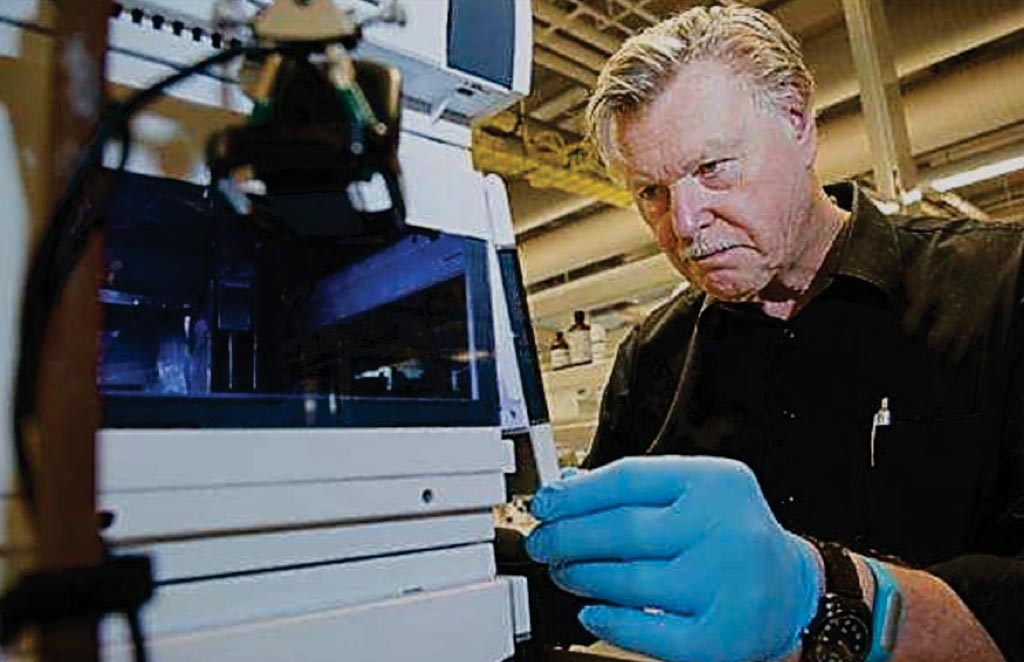Dried Blood Spot Protein Assays Evaluated for Biochemistry
By LabMedica International staff writers
Posted on 15 Mar 2018
Dried blood spots have long been used in applications like newborn testing, but they have yet to make their way into clinical proteomic testing in a significant way. This is due in part to the fact that conventional immunoassays, which are widely used for protein measurements in the clinic, are poorly suited to analyzing dried blood spots given their limited sample volume.Posted on 15 Mar 2018
Typically consisting of microliter volumes of blood spotted and dried on filter paper, dried blood spots offer potentially significant advantages compared to traditional blood draws. For instance, because dried blood spots use a finger prick as opposed to conventional phlebotomy, patients could conceivably draw samples themselves without needing to visit a doctor's office.

Image: SISCAPA Assay Technologies founder Dr. Terry Pearson PhD, has created a way to test for multiple diseases from a single drop of dried blood using fully automated mass spectrometer workflow (Photo courtesy of SISCAPA).
Scientists at the University of Victoria-Genome BC Proteomics Centre (Victoria, BC, Canada) found that dried blood spot samples might be somewhat less stable than thought. They looked at the stability of 21 amino acids under various conditions, finding that a number of amino acids were degraded due to heat and humidity with histidine and tryptophan among the most affected. A team at the University of Washington (Seattle, WA, USA) developed mass spec-based dried blood spot assays to glycated hemoglobin-β (HbA1c), apolipoprotein A-I, and apolipoprotein B and compared them to existing clinical assays (immunoassays for ApoA-1 and ApoB and HLPC-UV for HbA1c) using conventional plasma and whole blood samples.
This team analyzed samples from 36 patients, and found a large discrepancy between the values they were getting from the dried blood spots and the conventional plasma samples. They also found a discrepancy between whole blood drawn via venipuncture and then spotted to make dried blood spots and paired capillary dried blood spot samples. The discrepancy was large enough that it would have changed clinical decision making, for instance, reclassifying a patient with normal HbA1c according to the standard assay as pre-diabetic based on the dried blood spot score.
Scientists at SISCAPA Assay Technologies (Washington, DC, USA) have developed a fully automated mass spec workflow for running dried blood spot samples, and the objective in the near term they will implement multiplex panels of existing clinical analytes as laboratory-developed tests offered out of a CLIA facility. N. Leigh Anderson, PhD, CEO of SISCAPA, said, “We are getting total workflow CVs with replicate dried blood spot samples on the order of 2%, and they calibrate very tightly with the clinical assays done on serum at the same time. We want more volume than [is provided by] one dried blood spot. We would like to have 100 to 150 µL of whole blood. And we really want the volume precision to be 1 or 2 percent instead of 4 or 5 or 10%, which is what it typically is now. Our assays are good to 2%, and so we don't want to lose our precision just based on the volume of sample.” The studies were presented at Mass Spectrometry: Applications to the Clinical Lab (MSACL) meeting held January 21 - 25, 2018, Palm Springs, CA, USA.
Related Links:
University of Victoria-Genome BC Proteomics Centre
University of Washington
SISCAPA Assay Technologies













